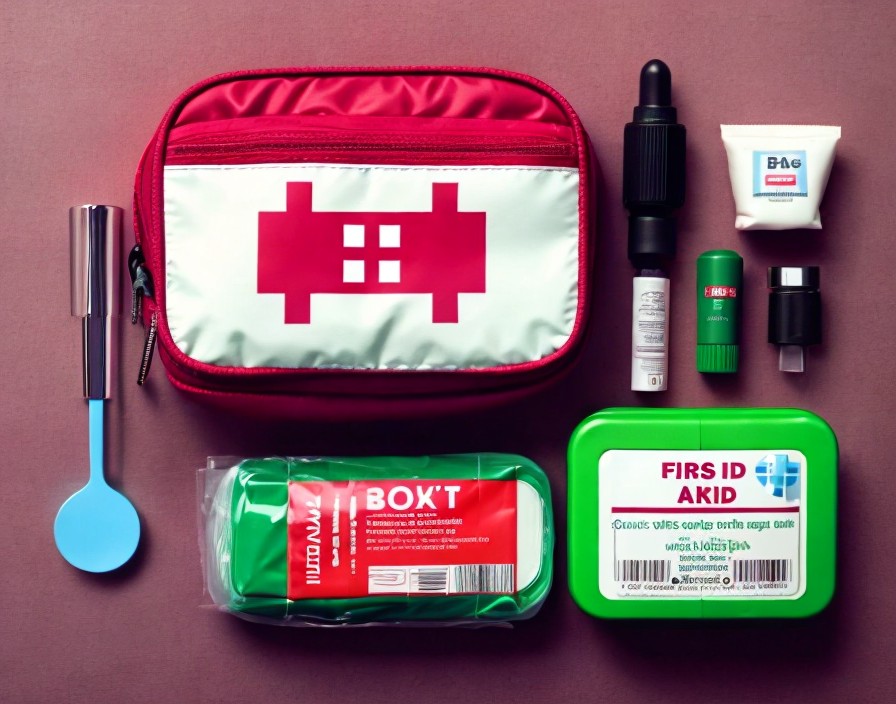
Introduction
Imagine a world where the first connection you make is not through sight or touch, but through sound. This is the incredible reality for an unborn baby, nestled in the womb. The journey of life begins long before a child sees the light of day, and it starts with the miracle of hearing. In this intricate dance of development, the fetus begins to respond to the symphony of sounds from a surprisingly early stage, painting a vivid picture of how life outside the womb will be.
The womb is more than just a safe haven for growth; it’s the first classroom where the unborn baby starts learning, listening, and remembering. This miraculous process begins as early as 25 weeks into gestation when the major structures necessary for hearing are already in place. The soft lullaby of the mother’s heartbeat, the gentle cadence of her voice, and even the subtle nuances of external music begin to shape the baby’s auditory world. It’s a world where the rhythmic heartbeat is a comforting constant and the mother’s voice becomes a familiar, soothing presence.
But this is more than just a biological marvel. The fetal response to sound is a touching testament to the deep, unspoken bond between a mother and her child. Studies have shown that this early auditory exposure plays a crucial role in shaping the baby’s preferences and responses post-birth. The sound of the mother’s voice isn’t just heard; it’s felt and remembered, creating an invisible thread of connection that begins weaving even before birth.
In this blog post, we’ll delve into the fascinating world of fetal hearing. We’ll explore the development of the auditory system in the womb, the remarkable way fetuses respond to different sounds, and how these early experiences influence their behavior and preferences after they are born. We’ll also offer insights and practical tips for expecting parents, helping them to foster this incredible connection with their unborn child through the power of sound.
So, join us on this journey into the miraculous world of fetal hearing, where every sound is a building block in the foundation of life and every heartbeat is a reminder of the unbreakable bond that begins in the womb.
The Development of Fetal Hearing
Embarking on the journey of fetal hearing development is akin to unraveling a beautifully complex symphony of nature. It’s a process that intertwines biology and wonder, beginning long before the baby encounters the outside world. This section will explore the fascinating developmental milestones of the auditory system in an unborn baby.
Early Stages: The Formation of Hearing
The story of fetal hearing starts much earlier than many might expect. By the 25th week of gestation, the major structures necessary for hearing are already formed. This marks a critical point in prenatal development – a period where the fetus is not just growing but beginning to experience its environment in a truly unique way.
In these early stages, the fetus is surrounded by the amniotic fluid, a medium through which sound travels differently than it does in air. This fluid environment plays a crucial role in how sound is conveyed to the developing ears of the fetus. The sounds that permeate this liquid world are muffled and distorted compared to those in the outside world, yet they provide the first sensory inputs to the unborn child.
The Role of the Mother’s Voice and Heartbeat
Among the earliest and most consistent sounds a fetus hears is the mother’s heartbeat and the sound of her blood flowing. These rhythmic, soothing sounds form a foundational acoustic backdrop for the fetus. Research suggests that the mother’s heartbeat has a calming effect on the newborn, implying a deep-seated familiarity and comfort derived from prenatal exposure.
The mother’s voice also plays a pivotal role in this auditory landscape. It’s not merely a sound but a familiar, comforting presence. Studies have shown that newborns can recognize their mother’s voice immediately after birth, indicating that they are actively listening and forming memories in the womb.
External Sounds: An Auditory Glimpse into the Outside World
As the fetus develops, its capacity to perceive external sounds also grows. Around 29-33 weeks of gestation, a baby in the womb begins to respond to a broader range of sounds, including voices, music, and general environmental noise. This exposure is not passive; it’s an active process where the fetus starts to discern and react to different auditory stimuli.
Interestingly, the type of sounds and their characteristics can influence fetal behavior. For example, classical music, often characterized by its complex structure and variations in pitch and volume, might stimulate the fetal brain differently than spoken words or other types of music.
The Science Behind the Sounds
The science of fetal hearing is backed by numerous studies. For instance, research has demonstrated that fetuses blink in response to loud sounds and can even show signs of habituation – a decrease in response to repeated or continuous sounds. This indicates not just the ability to hear but also the ability to process and react to auditory information.
Moreover, the development of the auditory system in the fetus sets the stage for postnatal auditory function and development. The experiences in the womb lay the groundwork for future learning, language development, and emotional bonding.
In the next section, we will delve deeper into how fetuses respond to different types of sounds and the impact of these early auditory experiences on their postnatal life.
Responding to Sound: Music and Voice
In this immersive journey through fetal auditory development, we now turn our focus to how unborn babies respond to specific auditory stimuli: music and voice. This response is not just a mechanical reflex; it is a complex, emotionally charged interaction that lays the foundation for future learning, cognitive development, and emotional bonding.
The Fascinating World of Fetal Music Perception
Music, with its rich tapestry of rhythms and melodies, offers a profound stimulant to the developing fetal brain. Research has revealed that fetuses can distinguish different types of music and react in unique ways to these auditory experiences. But what’s truly captivating is the potential impact of these musical experiences on the fetus.
- Classical Music and Cognitive Development: Studies have suggested that exposing fetuses to classical music may stimulate their cognitive brain development. This is possibly due to the complex structure of classical music, which may offer a richer array of auditory stimuli compared to other music genres.
- Impact on Postnatal Preferences: The music fetuses are exposed to prenatally can also influence their postnatal preferences. Infants often show a preference for music they were exposed to in the womb, suggesting a form of prenatal memory or imprinting.
The Unique Influence of the Mother’s Voice
The mother’s voice is a crucial element in the fetal auditory environment. It is more than a mere sound; it represents comfort, safety, and an emotional connection that transcends the physical barriers of the womb.
- Newborns’ Recognition of Maternal Voice: Newborns have been shown to exhibit a preference for their mother’s voice over other voices immediately after birth. This indicates that they are not only capable of hearing their mother’s voice in the womb but are also forming memories associated with it.
- Maternal Voice as a Calming Agent: The sound of the mother’s voice has been found to have a calming effect on newborns, suggesting that the emotional content of the mother’s voice is communicated to and understood by the fetus.
- Speech Patterns and Language Development: Exposure to speech patterns in the womb is also believed to influence language development. Fetuses exposed to different languages show different reactions to speech sounds postnatally, indicating a fundamental level of language learning occurring prenatally.
The Response to External Voices and Sounds
Beyond the mother’s voice, fetuses are also responsive to other external voices and sounds. This exposure plays a crucial role in shaping the fetus’s auditory preferences and responses.
- Differentiating Between Voices: Studies suggest that fetuses can differentiate between different voices and may even respond more actively to the voices of their parents.
- Response to Varied Sound Stimuli: Exposure to different sound stimuli, including music, speech, and everyday noises, can lead to varied fetal responses. These responses include changes in movement patterns and heart rate, indicating an active engagement with the auditory environment.
In conclusion, the prenatal auditory environment, rich with music and voice, is not just about hearing; it’s about the beginning of learning, memory formation, and emotional bonding. In the next section, we will explore how these prenatal auditory experiences influence fetal behavior and set the stage for postnatal life.
The Impact of Prenatal Sounds on Fetal Behavior
Delving deeper into the auditory world of the unborn, we uncover how various sounds influence fetal behavior and set the stage for postnatal preferences. This section explores the intricate relationship between prenatal auditory experiences and their profound effects on the fetus.
1. Shaping Fetal Behavior Through Sound
- Variations in Fetal Movement: Research has shown that fetuses respond to auditory stimuli with varying patterns of movement. For instance, certain types of music or the sound of their mother’s voice can lead to increased activity or changes in movement patterns, indicating a level of engagement or recognition.
- Heart Rate Responses: The fetal heart rate is another indicator of their response to sound. Studies have observed that certain sounds, particularly the mother’s voice or music, can lead to changes in the fetal heart rate, reflecting an emotional or physiological response.
2. Prenatal Sound Exposure and Postnatal Preferences
- Influence on Newborn Preferences: The sounds a fetus is exposed to can shape their postnatal preferences. For example, newborns often show a preference for music or stories they heard while in the womb, suggesting a continuity of experience and memory from prenatal to postnatal life.
- Language and Voice Recognition: Exposure to language and voice patterns in utero is crucial for postnatal language development. Newborns can distinguish between languages heard in the womb and those that are new, indicating early language recognition skills. Additionally, they often show a preference for voices and speech patterns they were exposed to prenatally.
3. Fetal Learning and Memory Formation
- Evidence of Fetal Learning: The concept of fetal learning extends beyond mere auditory processing. Fetuses exposed to repeated or specific sounds can exhibit signs of learning, such as habituation – a decreased response to a familiar stimulus over time. This suggests an early form of memory and learning capability.
- Memory Retention Post-Birth: The retention of auditory experiences in memory is evidenced by newborns’ reactions to familiar sounds or voices. This retention indicates that prenatal exposure to sound contributes to the formation of early memory traces.
4. The Calming Effect of Familiar Sounds
- Soothing Impact of Recognized Sounds: Familiar sounds, particularly the mother’s voice, can have a calming effect on newborns. This effect is attributed to the recognition and memory of these sounds, offering comfort and a sense of familiarity to the infant.
- General Impact on Mental Health: The early exposure to and recognition of soothing sounds may have broader implications for an infant’s mental health and emotional well-being, offering a sense of continuity and security as they transition from the prenatal environment to the outside world.
In summary, the world of sounds experienced by a fetus is not just a passive auditory landscape. It is an active, dynamic environment that shapes their behavior, influences their postnatal preferences, and contributes to their early learning and memory formation. In the next section, we will discuss practical tips for expecting parents to engage with their unborn baby through sound, harnessing these insights for positive developmental outcomes.
Practical Tips for Expecting Parents: Engaging with Your Unborn Baby Through Sound
As we delve into the practical aspect of our exploration, it’s crucial for expecting parents to understand how they can positively influence their baby’s auditory development and overall well-being through sound. This section offers science-backed tips and suggestions for engaging with your unborn baby, fostering a deep connection even before birth.
1. Talking to Your Unborn Baby
- Start Conversations Early: Begin talking to your baby early in the pregnancy. The sound of your voice not only helps in forming a bond but also aids in the baby’s auditory development.
- Narrate Your Day: Share details of your day or read aloud. This ongoing verbal interaction can be comforting and helps familiarize the baby with your voice.
- Include Various Voices: Encourage other family members, especially the other parent, to speak to the baby as well. Different voices can enrich the baby’s auditory experience.
2. Introducing Music
- Choose Soothing Melodies: Play soft, soothing melodies. Classical music or lullabies are excellent choices, as they are often calming and not too harsh for the baby’s developing ears.
- Avoid Loud and Jarring Noises: Keep the volume moderate. Extremely loud or jarring noises can be startling or even stressful for the fetus.
- Explore Different Genres: Don’t limit yourself to one type of music. A variety of genres can stimulate the baby’s auditory senses in different ways.
3. Reading and Singing
- Read Aloud Regularly: Reading to your unborn baby is not only a way to bond but also introduces them to rhythmic speech patterns, which is beneficial for language development.
- Sing to Your Baby: Singing lullabies or simple songs can be a soothing and joyful way to connect with your baby.
4. Creating a Calming Environment
- Maintain a Calm Ambience: A stress-free, calm environment can be beneficial for both the mother and the baby. Stress and anxiety can affect the baby’s environment, so it’s important to create a peaceful setting.
- Mindful of External Noises: Be aware of the surrounding noise levels. Consistent loud noises or sudden loud sounds can impact the baby’s development and stress levels.
5. Monitoring Baby’s Response
- Notice Movement Patterns: Pay attention to how your baby moves in response to different sounds or voices. This can be an indicator of their likes and dislikes.
- Consistency is Key: Regular and consistent auditory exposure is more effective than sporadic interaction.
6. Safety Considerations
- Consult Healthcare Providers: Always discuss any concerns or questions about prenatal activities with healthcare providers to ensure the safety for both the mother and the baby.
- Avoid Direct Sound Sources on the Belly: Direct sound sources like headphones on the belly should be used cautiously and preferably avoided to prevent overstimulation.
In conclusion, engaging with your unborn baby through sound is a beautiful and effective way to start building a relationship and aid in their development. As you embark on this journey, remember that every word spoken, every song sung, and every story told, is a step closer to forming an everlasting bond with your child. In the next section, we will wrap up our exploration with a reflective conclusion on the incredible journey of fetal auditory development.
Conclusion: Embracing the Miracle of Fetal Auditory Development
As we reach the conclusion of our exploration into the wondrous world of fetal auditory development, it’s time to reflect on the profound implications and the remarkable journey that begins in the womb. This journey of sound, from the rhythmic beating of a mother’s heart to the symphonies of everyday life, plays a pivotal role in shaping the future of the unborn child.
The Symphony of Early Life
The fetal response to sound is not just a biological phenomenon; it’s a harmonious interplay between the developing child and the outside world. It’s a symphony where every note matters, from the soft lullabies sung by expecting parents to the melodic contours of daily conversations. These sounds are the first threads in the rich tapestry of human experience, weaving patterns of memory, emotion, and connection that last a lifetime.
Bonding Beyond Words
For expecting parents, understanding the impact of sound on their unborn baby opens a gateway to early bonding. This bond, initiated through shared auditory experiences, transcends the physical barriers of the womb, creating an emotional connection that is both profound and enduring. The sounds that a baby hears before birth lay the foundation for this deep, unspoken bond, setting the stage for the continuous journey of parenting that follows.
The Foundation for Future Development
The auditory experiences of a fetus are more than just precursors to hearing; they are the building blocks for future cognitive and emotional development. The early exposure to varied sounds and voices plays a crucial role in shaping the baby’s linguistic abilities, auditory preferences, and even emotional well-being. This prenatal period is a critical time for laying the groundwork for a child’s future learning and development.
Nurturing Through Sound
For parents and caregivers, the knowledge of fetal auditory development is a powerful tool. It empowers them to nurture their unborn child in meaningful ways, using sound as a medium of love, comfort, and learning. By engaging with their baby through music, speech, and song, parents can positively influence their child’s developmental trajectory, even before birth.
A Journey of Discovery
As we conclude, let’s celebrate the miracle of fetal hearing as a remarkable journey of discovery. It’s a journey that begins in the quiet sanctuary of the womb but echoes throughout the child’s life. Each sound, each voice, and each melody plays a crucial role in this journey, shaping the child’s understanding of the world and their place within it.
In the end, the miracle of fetal hearing reminds us of the profound connections that bind us, the unseen threads of love and memory that begin weaving long before a child is born. It’s a reminder that the journey of life, with all its wonders and mysteries, begins not with the first breath, but with the first sound.
10 FAQs and their answers for the blog post:
- When can a fetus start hearing sounds?
- Fetuses begin to hear sounds around the 25th week of gestation, with major structures for hearing developed by this time.
- What types of sounds can a fetus hear?
- A fetus can hear a variety of sounds including the mother’s heartbeat, her voice, music, and muffled sounds from the outside world.
- Can fetuses recognize their mother’s voice?
- Yes, fetuses can recognize their mother’s voice and show a preference for it after birth, indicating prenatal auditory recognition.
- Does playing music to a fetus have benefits?
- Playing music to a fetus can stimulate auditory development and might influence cognitive development. Classical music is often recommended for its complex structure.
- Is it too early to talk to my unborn baby?
- No, it’s never too early. Talking to your unborn baby can aid in bonding and supports their auditory development.
- Can loud noises harm a fetus?
- Extremely loud noises might be startling or stressful for a fetus. It’s recommended to avoid very loud environments.
- How does prenatal sound exposure influence postnatal life?
- Prenatal sound exposure can shape a baby’s auditory preferences, contribute to language development, and assist in forming early memory and learning patterns.
- Should I use headphones on my belly to play music for my baby?
- It’s safer to play music at a moderate volume in the room as direct sound sources on the belly can overstimulate the fetus.
- Can a fetus learn and remember sounds?
- Yes, fetuses can learn and remember sounds. They often show a preference for familiar music or voices they heard in the womb.
- How can I use sound to bond with my unborn baby?
- Regularly talking, singing, and playing gentle music can help you bond with your unborn baby and positively influence their development.
Blog Tags: fetal development, prenatal care, maternal bonding, auditory stimulation, fetal hearing, parenting tips, prenatal music, motherhood, unborn baby care, pregnancy wellbeing



















